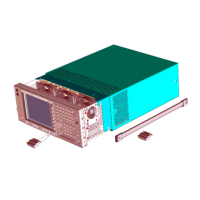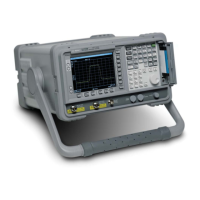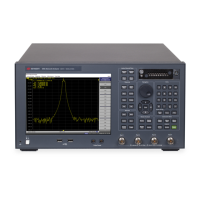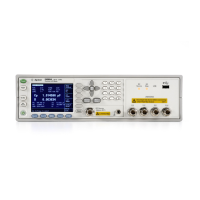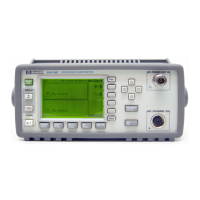55
Compatible SCPI Commands
Agilent N9062A/W9062A Supported IEEE SCPI Commands
Agilent N9062A/W9062A Supported IEEE SCPI
Commands
The Agilent N9062A/W9062A application also supports the following IEEE 488.2 SCPI commands:
Table 3-2 IEEE 488.2 SCPI Commands
SCPI Commands Description
*CAL? Performs a full alignment and returns a number indicating the success of the alignment. A
zero is returned if the alignment is successful. A one is returned if any part of the
alignment fails.
*CLS Clears the status byte. It does this by emptying the error queue and clearing all bits in all of
the event registers. The status byte registers summarize the states of the other registers. It
is also responsible for generating service requests.
*ESE <number>
*ESE?
Selects the desired bits from the standard event status enable register. This register
monitors I/O errors and synchronization conditions such as operation complete, request
control, query error, device dependent error, execution error, command error and power
on. The selected bits are OR’d to become a summary bit (bit 5) in the status byte register
which can be queried.
The query returns the state of the standard event status enable register.
*ESR? Queries and clears the standard event status event register. (This is a destructive read.)
ID? This command does not follow any of the SCPI rules. It only exists so that production can
get a universal response to the ID? command for every instrument.
*IDN? Returns an instrument identification information. The string will contain the model
number, serial number and firmware revision. The response is organized into four fields
separated by commas. The field definitions are as follows:
1.Manufacturer
2.Model
3.Serial number
4.Firmware version
*OPC
*OPC?
The *OPC command sets bit 0 in the standard event status register to "1" when pending
operations have finished. It does not hold off subsequent operations. The *OPC? query
stops new commands from being processed until the current processing is complete. Then
it returns a "1", and the program continues.
This query can be used to synchronize events of other instruments on the external bus.
*OPT? Returns a string of all the installed instrument options. It is a comma separated list such as:
"BAC,BAH". There are a few options that include more then one mode. An instrument
with one of these options will report the option number once for each mode.
*RCL <register> This command recalls the instrument state from the specified instrument memory register.

